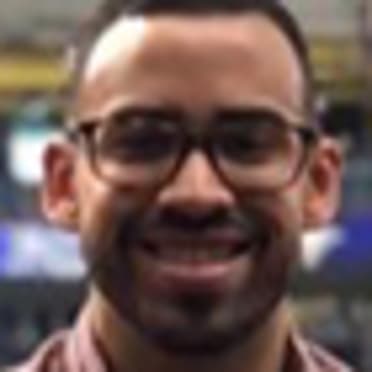3 ways Dodgers can approach Bellinger
This story was excerpted from Juan Toribio's Dodgers Beat newsletter. To read the full newsletter, click here. And subscribe to get it regularly in your inbox.
LOS ANGELES -- During the GM Meetings in Las Vegas, president of baseball operations Andrew Friedman and general manager Brandon Gomes said they had some time to decide what the team will do with Cody Bellinger.
Well, time is starting to run out and the Dodgers will have to make a decision that no other organization has had to make in quite some time. Will they non-tender Bellinger just three years removed from an MVP season? Or will they take one last chance on the homegrown player?
At this point, only the Dodgers’ front office knows that answer. They still have 24 hours to decide. But that decision could shape the rest of the offseason, which, obviously, makes it very important.
Bellinger is arbitration-eligible for one more season. With his current deal, he’s scheduled to make somewhere between $17 million and $19 million in 2023. A couple of years ago, that might’ve seemed like a bargain for a player of Bellinger’s caliber. Now, it seems like an aggressive amount for a player who has been one of the worst qualifying hitters in each of the past two seasons.
Bellinger got a pass for his struggles in 2021 because he was working his way back from offseason right shoulder surgery, a procedure that takes time to fully build back up from. After a healthy offseason, Bellinger and the Dodgers came into Spring Training believing a breakout was on the horizon.
That didn't happen and Bellinger posted a .654 OPS in 144 games. The worst moments came in the postseason. In Game 2 of the National League Division Series, the Dodgers pinch-hit Austin Barnes for Bellinger. Sure, it was against Josh Hader, who is hard on lefties, but what would you have said three years ago if someone told you Bellinger would get taken out of a game for the backup catcher? Exactly.
It got worse for Bellinger the rest of the way as he didn’t start in Game 3 or 4. The Padres started right-hander Joe Musgrove in Game 4, but Los Angeles went with Trayce Thompson in center field.
Simple logic says the Dodgers can’t possibly pay that much money for a player who has essentially turned into a defensive specialist the past two seasons, especially if they’re trying to reset their salary cap somewhat. Los Angeles also has to add one more quality starter to the rotation now that Tyler Anderson signed with the Angels. Clearing Bellinger’s salary isn’t directly correlated to the Dodgers' spending for a starter, but getting some more financial flexibility wouldn’t hurt.
Non-tendering Bellinger and letting him find a new home also comes with risk. The talent, even if not what it once was, is still there somewhere. It’s impossible to hit 40-plus homers in a big league season by accident. The question is: Can Bellinger get back to that form in a Dodgers uniform or does he need a change? The answer to that question will likely decide whether Bellinger returns next season.
The third option for Los Angeles would be to non-tender Bellinger and try to work out a deal that won’t pay the outfielder $20 million. Bellinger is a client of Scott Boras, who usually maximizes market value for his players. Going this route also comes with risk as Bellinger could opt to go elsewhere as a free agent.
There’s an argument to be made for all three scenarios. That’s what makes Bellinger's case so fascinating. Now, it’s time for the Dodgers to make their decision.
